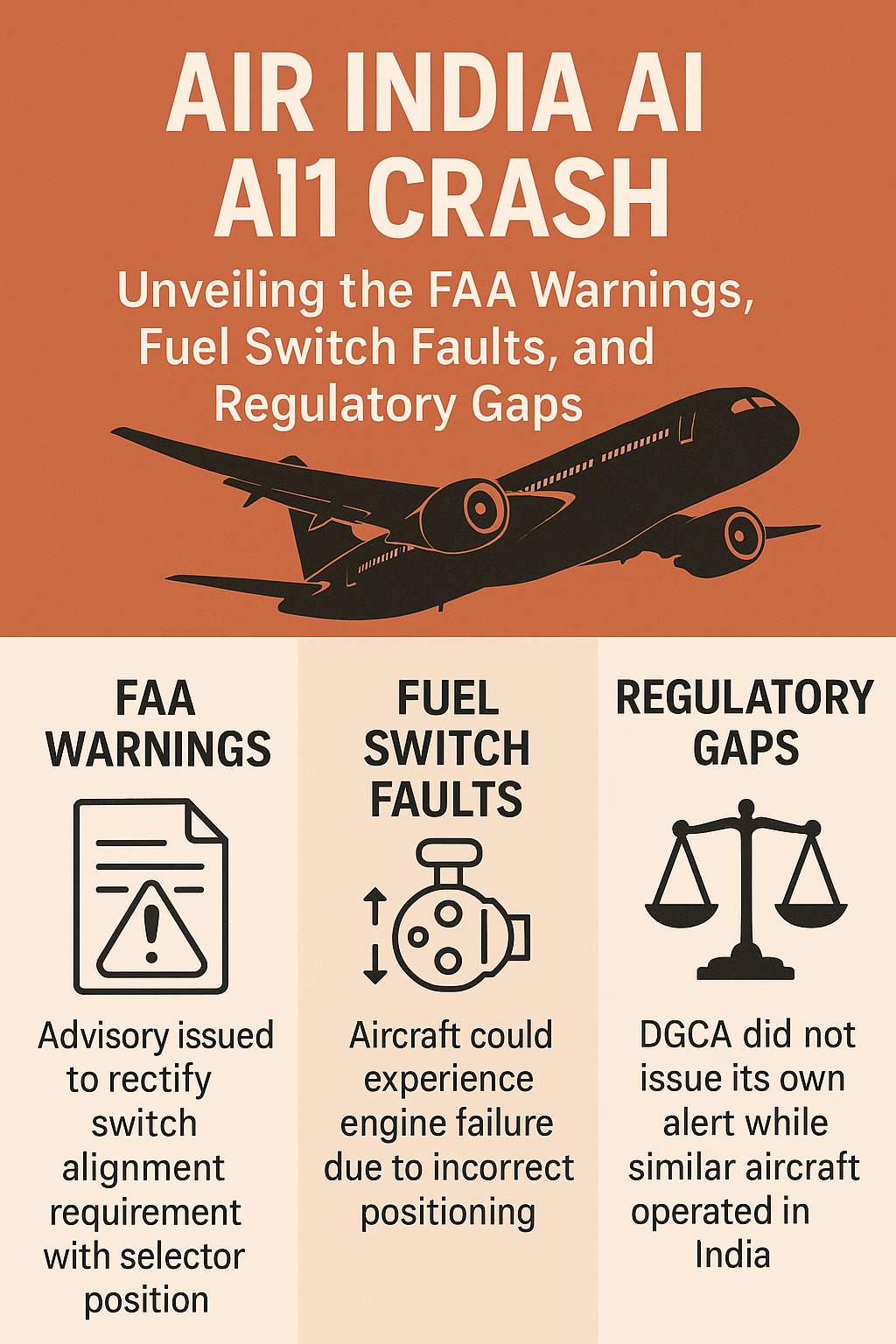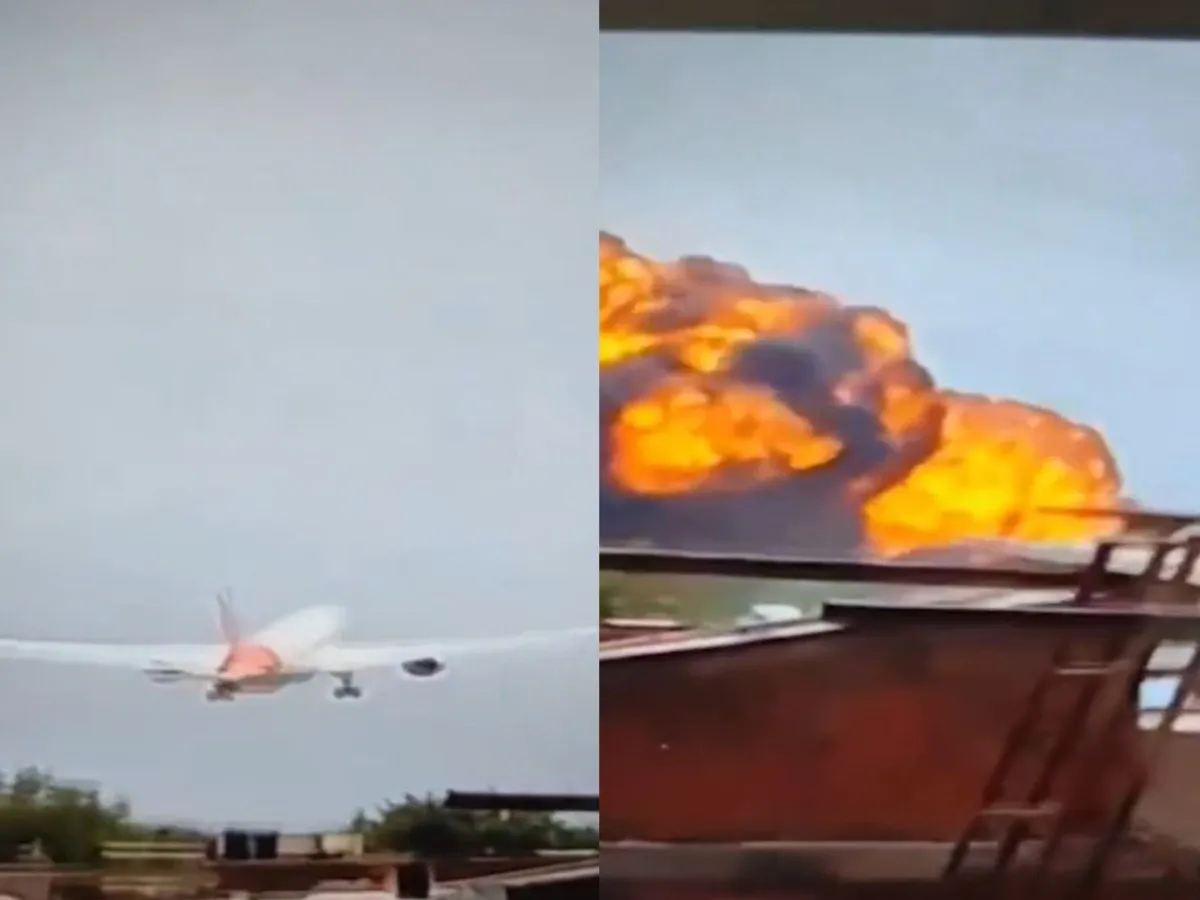On June 12, 2025, Air India Flight AI 171, a Boeing 787 Dreamliner, tragically crashed shortly after takeoff from London to Ahmedabad, claiming 260 lives. The preliminary AAIB report revealed that both engine fuel control switches unexpectedly moved from RUN to CUTOFF within one second, resulting in dual engine failure.
But this disaster didn’t happen in a vacuum. A series of warnings dating back seven years went unacted upon.
2. December 2018 – FAA Special Airworthiness Information Bulletin NM‑18‑33
In December 2018, the FAA issued SAIB NM‑18‑33 concerning Boeing fuel control switches, including those on the 787:
- The locking mechanism could disengage unintentionally, allowing the switch to flip to CUTOFF without lifting.
- This risk could cause an inflight engine shutdown.
Although it urged inspections, this was an advisory, not a mandatory Airworthiness Directive.
3. May 15, 2025 – UK CAA Safety Notice SN‑2015/005
Just weeks before the crash, the UK Civil Aviation Authority issued Safety Notice SN‑2015/005, version 2, dated 15 May 2025, requiring:
- Mandatory checks, testing, or replacement of fuel shutoff valve actuators on Boeing 737/757/767/777/787 aircraft.
- Crew-level daily inspections where allowed by existing Airworthiness Directives.
Despite the AI 171 being over UK airspace, neither Air India nor DGCA took preemptive steps.
4. DGCA’s July 2025 Mandate – Too Late to Matter
On July 14–15, 2025, the Directorate General of Civil Aviation (DGCA) issued a directive requiring all Indian airlines to inspect fuel switch locking mechanisms on Boeing 787 and specific 737 aircraft by 21 July 2025.
While the official DGCA circular is not yet available publicly, it references the FAA’s 2018 advisory and UK CAA’s 2025 notice, emphasizing the urgency. However, action was only taken after the crash claimed hundreds of lives.
5. RTI Disclosures: 65 Engine Shutdowns, 11 Mayday Calls
According to data released via India's Right to Information (RTI) Act, over the past five years:
- 65 engine shutdown incidents occurred.
- 11 Mayday declarations were made in the 17 months leading up to the crash.
Despite these alarming figures, there was no proactive regulatory response prior to June 2025.
6. Cockpit Voice Exchange – Technical or Intentional?
AAIB’s preliminary report captured the final cockpit exchange:
“Why did you cut off?”
“I didn’t.”
This suggests no pilot intentionally activated the fuel cutoff switches, pointing toward a potential mechanical or design defect that warrants deeper investigation.
7. Pilot Groups Push Back on ‘Suicide Theory’
After media speculation implied a possible pilot suicide, pilot associations responded strongly:
- Indian Commercial Pilots’ Association (ICPA)
- Airline Pilots Association of India
- International Federation of Airline Pilots’ Associations (IFALPA)
They condemned the narrative as premature, unfounded, and diverting attention from systemic issues.
8. Boeing and FAA Reassurances vs. Systemic Risk
In response to concerns, Boeing and FAA emphasized:
- The existing advisory suffices.
- Fuel switch systems are safe when used correctly.
Yet multiple engine shutdown incidents—even with proper protocols—raise doubts about whether the design itself is flawed.
9. Global Aviation Response: Qatar Lead, India Following
- Qatar Airways voluntarily implemented measures following the 2018 advisory.
- Airlines in South Korea, UK, Singapore, UAE, among others, have also initiated inspections.
In contrast, India acted only post-crash, reflecting a reactive rather than preventive mindset.
10. Key Takeaways & Lessons
- Advisory-level warnings must prompt action, not delay.
- Pilot integrity must be upheld until firm proof emerges.
- Boeing should redesign the fuel switch to prevent accidental CUTOFF.
- The DGCA must strengthen alignment with global aviation safety protocols.
11. Conclusion
The AI 171 crash highlights a critical failure of the aviation safety ecosystem: warnings were issued, actions were postponed, and lives were lost. While the AAIB’s final report is forthcoming, the path forward must include:
- Redesign of Boeing’s fuel switch.
- Immediate inspection of at-risk fleets.
- Systemic reforms to ensure regulatory bodies act on advisories proactively.
History will judge whether the industry learned—before another tragedy strikes.









